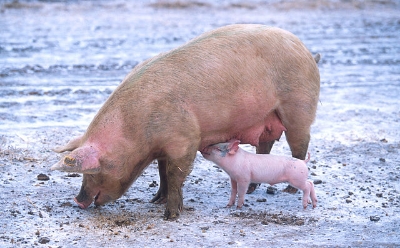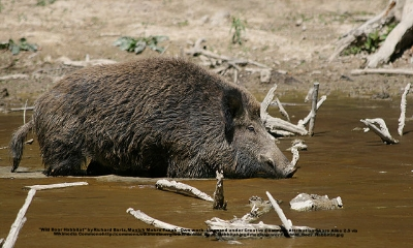Domesticated pig
Desended from wild boar
I recently came across an interesting article from Nature's Scientific Reports that discusses the ongoing domestication of bacteria by humans. We are all well aware of domestication of animals and plants, but have we ever considered domesticating bacteria? One consequence in animals is that the domestic versions does not resemble their wild counterparts. Striking examples are the large, white domestic ducks that are actually originally descended from the common mallard, or sheeps, which do not resemble the wild mouflon. Another consequence is that the domesticated animals lose genetic diversity. You may have heard stories about bananas which are at extreme risk for disease because of their monogenetic cultivation, or how many farm breeds across the world are going extinct putting the entire population of that animal at risk. In the article researchers investigated how Lactobacillus acidophilus has changed since being used in dairy foods and probiotics.
L. acidophilus is a unique bacteria because it can convert carbohydrates to lactic acid. Humans then, harness the bacteria to create fermented foods like yogurt. Because of its use in yogurt, and its general recognition as being safe by the FDA, many Lactobacillaea are used in probiotics, and we have written about the results of studies using them before. The researchers in this study examined many different strains of L. acidophilus from all over the world and dating back to 1922 to see how the species has changed. As it turns out, much like the domesticated plants and animals, all the strains tested had incredible genetic homology, with each strain being incredibly similar to the next. The authors believe that this strain is very robust, and that it sits in a very advantageous place in evolutionary space, so that it is difficult for mutations to take hold. This species can be thought of as an evolutionary bottleneck. This may have given this strain an upper hand in being selected by early manufacturers, who did not want variation between batches and starter cultures.
One may wonder though, does this put L. acidophilus at risk for disease? As it turns out the bacteria appears to be very resistant to disease. While it is attacked by many phages, these do not seem to affect the overall reliability of the species. Again, this resiliency speaks to its use in manufacturing. So the next time you are downing some delicious greek yogurt, remember that it likely tastes the same as when the ancient greeks were eating it too!


